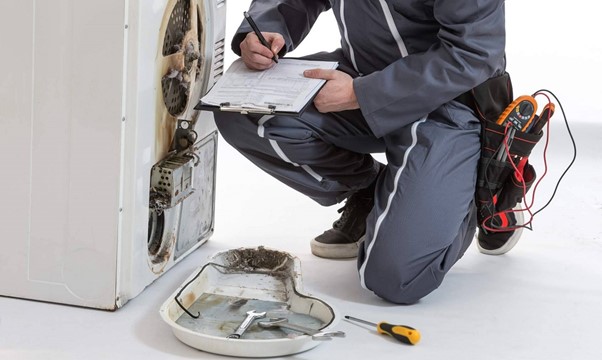
10 Common Appliance Repairs You Can DIY in 2024
In the fast-paced world of 2024, home appliances are more sophisticated than ever, making our lives easier and more convenient. However, when these appliances malfunction, the prospect of calling a professional can seem daunting, not to mention costly. Fortunately, many common appliance repairs are within reach of the average DIYer. If you’re in Tacoma and searching for an appliance repair service near me, this guide will help you tackle some of the most common repairs yourself. Let’s dive into 10 appliance repairs you can confidently handle on your own this year.
1. Fixing a Leaky Dishwasher
A leaking dishwasher can cause significant water damage if left unchecked. Often, leaks are due to a worn-out door seal or a loose hose connection. To fix this, first, turn off the dishwasher and unplug it. Inspect the door seal for any cracks or debris and clean or replace it if necessary. Check the hose connections for tightness and secure them if they’re loose. This simple repair can save you from more extensive damage and avoid a costly call to a professional.
2. Unclogging a Washing Machine Drain
A washing machine that won’t drain properly can disrupt your laundry routine. Typically, clogs in the drain hose or pump filter are the culprits. Start by unplugging the washing machine and checking the drain hose for blockages. Remove any visible debris and clean the hose thoroughly. Next, locate the pump filter (usually accessible through a small panel at the front of the machine) and clear out any lint or foreign objects. Reassemble everything and run a test cycle to ensure proper drainage.
3. Replacing a Refrigerator Water Filter
A clogged water filter in your refrigerator can reduce water flow and affect the taste of your ice and water. To replace the filter, locate it inside the fridge—usually in the upper-right corner or inside the refrigerator compartment. Follow the manufacturer’s instructions to remove the old filter and install the new one. Regularly replacing the water filter is an easy DIY task that ensures your refrigerator continues to provide clean, fresh-tasting water.
4. Repairing a Faulty Oven Igniter
A malfunctioning oven igniter can prevent your oven from lighting, leaving you without the ability to cook. To repair it, first, unplug the oven for safety. Remove the oven’s bottom panel to access the igniter. Check for any visible damage or cracks. If the igniter is faulty, it will need to be replaced. Purchase a new igniter compatible with your oven model and install it following the manufacturer’s instructions. This straightforward repair will get your oven back in action quickly.
5. Fixing a Noisy Garbage Disposal
A noisy garbage disposal can be annoying and is often caused by objects stuck inside the unit. First, turn off the disposal and disconnect the power. Use a flashlight to inspect the disposal for any foreign objects and remove them with tongs or pliers. If the noise persists, the blades may need sharpening or the disposal may require a reset. Consult the disposal’s manual for instructions on resetting the unit and, if necessary, seek replacement parts.
6. Adjusting a Dryer Drum
A dryer drum that makes banging noises or doesn’t turn smoothly may need adjustment. Start by unplugging the dryer and removing the front panel to access the drum. Check the drum support rollers and belts for wear and replace them if needed. Ensure the drum is properly aligned and securely fastened. Reassemble the dryer and run a test cycle to confirm that the drum operates quietly and efficiently.
7. Fixing a Broken Washing Machine Lid Switch
A washing machine lid switch ensures that the washer doesn’t spin with the lid open. If the washer doesn’t start or spin, the lid switch may be faulty. To replace it, unplug the washer and locate the switch (usually near the lid hinge). Remove the old switch and install a new one, ensuring all connections are secure. This repair can restore your washer’s functionality and prevent further issues.
8. Repairing a Faulty Microwave Turntable
A microwave turntable that doesn’t rotate can lead to uneven heating. Often, this issue is caused by a worn-out turntable motor or a misaligned support. To fix this, unplug the microwave and remove the turntable. Check the motor and support for any obstructions or damage. Clean or replace the motor as needed, and ensure the support is properly aligned. Reassemble the microwave and test the turntable’s operation.
9. Cleaning a Dishwasher Spray Arm
A dishwasher that isn’t cleaning dishes properly may have clogged spray arms. To clean them, remove the spray arms from the dishwasher and rinse them under warm water. Use a toothpick or small brush to clear any debris from the spray holes. Reattach the spray arms and run a test cycle to ensure your dishwasher cleans effectively.
10. Replacing a Broken Oven Temperature Sensor
An oven that doesn’t maintain the correct temperature may have a faulty temperature sensor. To replace it, unplug the oven and remove the sensor, which is usually located inside the oven cavity. Install the new sensor by following the manufacturer’s instructions and reconnecting the wiring. This repair can restore accurate cooking temperatures and improve your oven’s performance.
Conclusion
Many common appliance repairs are manageable with a bit of know-how and the right tools. By tackling these repairs, yourself, you can save money on professional services and keep your appliances running smoothly. If you’re in Tacoma and need further assistance, searching for appliance repair Tacoma or appliance repair service near me will connect you with local experts who can help with more complex issues. Embrace these DIY tips and keep your home appliances in top shape throughout 2024.
